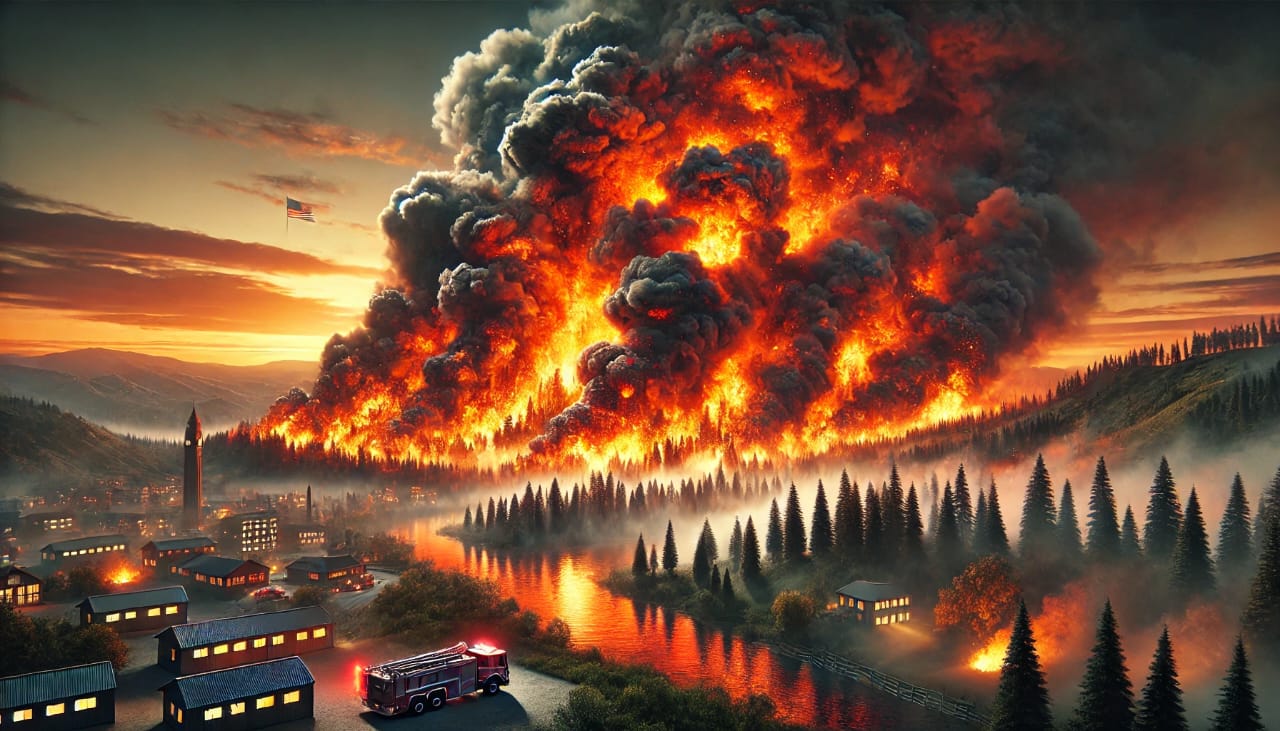Wildfires and structural fires have long been significant concerns in the United States. In recent years, fire incidents have become more frequent and severe due to changing climatic conditions and urban development. This article explores the topic of “fire in the United States today,” highlighting its causes, impacts, and the preventive measures that can help minimize risks.
Understanding Fire Incidents in the United States Today
Fires occur for various reasons, and the United States faces a dual challenge of wildfires and structural fires. Wildfires are often caused by natural factors such as lightning strikes, but human activities play a significant role in their frequency and intensity. Structural fires, on the other hand, are commonly linked to electrical malfunctions, unattended cooking, and heating equipment issues.
Wildfires: A Growing Concern
In recent years, wildfires have ravaged large parts of the United States, especially in states like California, Oregon, and Arizona. The increase in wildfire activity can be attributed to prolonged droughts, rising temperatures, and poor land management. “Fire in the United States today” has become synonymous with devastating wildfires that destroy homes, wildlife habitats, and vital resources.
Structural Fires: A Persistent Threat
While wildfires dominate headlines, structural fires remain a significant problem. According to recent statistics, thousands of structural fires occur annually, leading to loss of life, property damage, and economic hardship. These fires often stem from preventable causes such as faulty wiring and negligence.
Key Causes of Fire in the United States Today
Understanding the root causes of fires is essential for developing effective prevention strategies. Below are the primary contributors to fire incidents:
- Climate Change and Droughts Prolonged periods of drought have left many forests and grasslands dry and highly flammable. Rising temperatures exacerbate these conditions, creating a perfect storm for wildfires.
- Human Activities Campfires, discarded cigarettes, and arson are leading human-related causes of wildfires. Similarly, structural fires often result from carelessness, such as leaving candles unattended or overloading electrical circuits.
- Urban-Wildland Interface (UWI) The expansion of human settlements into forested areas has increased the risk of fires. Homes in these areas are more susceptible to wildfire damage.
- Electrical Failures Electrical malfunctions remain one of the top causes of structural fires in urban and rural areas. Aging infrastructure and lack of maintenance often contribute to this problem.
Impacts of Fire in the United States Today

The consequences of fires are far-reaching, affecting individuals, communities, and the environment. Here are some of the major impacts:
1. Environmental Damage Wildfires destroy vast tracts of forests, leading to soil erosion, loss of biodiversity, and changes in local ecosystems. Smoke from wildfires also contributes to air pollution, affecting air quality over large regions.
2. Economic Losses Fire incidents result in billions of dollars in damages annually. Costs include rebuilding homes, firefighting efforts, and lost revenue from affected industries like tourism and agriculture.
3. Health Risks Smoke inhalation poses significant health risks, especially for vulnerable populations such as children and the elderly. Fires also release toxic chemicals, which can have long-term health implications.
4. Loss of Life and Property The most devastating impact of fires is the loss of human lives and homes. Thousands of families are displaced every year due to fire-related incidents.
How to Prevent Fire in the United States Today
Prevention is the key to reducing the frequency and severity of fire incidents. Here are some steps individuals, communities, and authorities can take:
1. Public Awareness and Education Educating the public about fire safety can significantly reduce the number of incidents. Campaigns on proper handling of fire-prone materials and equipment can save lives and property.
2. Improved Land Management Controlled burns, clearing underbrush, and maintaining firebreaks are essential measures to prevent wildfires. Proper land management can reduce the fuel available for fires to spread.
3. Building Fire-Resilient Structures Using fire-resistant materials and implementing safety measures such as sprinkler systems can minimize the damage caused by structural fires.
4. Strengthening Firefighting Infrastructure Investing in modern firefighting equipment and training programs ensures that emergency responders are well-prepared to tackle fire incidents.
5. Adopting Technological Solutions Advanced technologies like satellite monitoring and AI-driven fire detection systems can help identify fire risks early and facilitate quick responses.
Fire Preparedness Tips for Individuals
Here are some practical tips for staying safe from fire in the United States today:
- Create a Fire Escape Plan: Ensure everyone in your household knows the escape routes and meeting points in case of a fire.
- Install Smoke Detectors: Regularly check and maintain smoke detectors in your home.
- Avoid Overloading Circuits: Distribute electrical devices evenly across outlets to prevent overheating.
- Practice Safe Cooking: Never leave cooking appliances unattended.
- Clear Flammable Materials: Keep your yard free of dry leaves and debris, especially in wildfire-prone areas.
Conclusion
Fire incidents remain a pressing issue in the United States today, with wildfires and structural fires posing significant risks. By understanding the causes, impacts, and preventive measures, individuals and communities can work together to reduce fire-related disasters. Awareness, preparedness, and innovation are the keys to ensuring safety and resilience in the face of this growing challenge.


